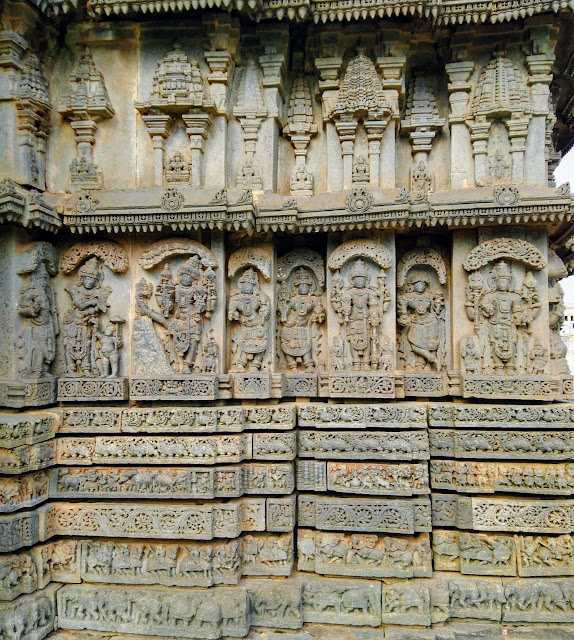The South Niche ( Face 8 )

The SOUTH NICHE - FACE 8 The temple is provided with three single storied niches, one each on the south, west and north. They are carved like beautiful temples. They act as buttresses against the central tower of the temple. The photo above is that of the South niche. On the door jambs of this temple-like niche are seen the DWAARAPALAKAS also. All the other parts of a temple are provided too. The figures on the niche walls are small for want of space. Inside the niche is seen an aaseena DURGAA ( zoom to see ). VARAAHA wih consorts The left wall of the niche has an aaseena VARAAHA with consorts ( see the photo above ). Aaaseena NARASIMHA The right wall of the niche has an aaseena NARASIMHA ( see the photo above ).








